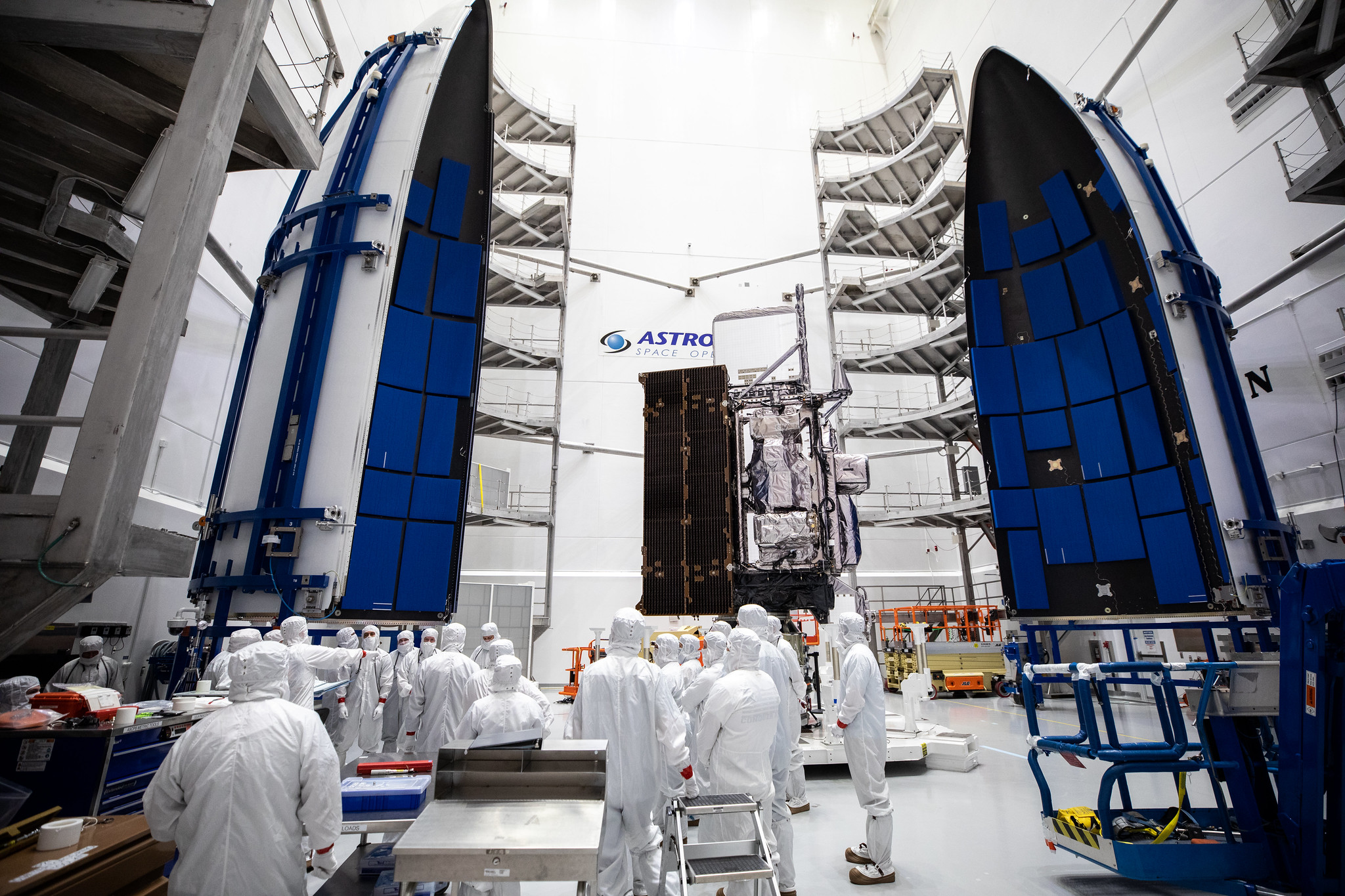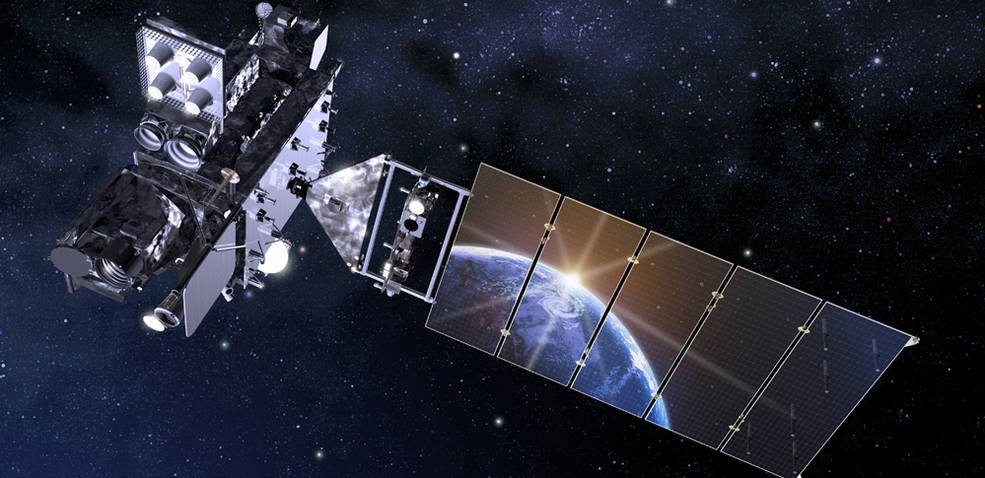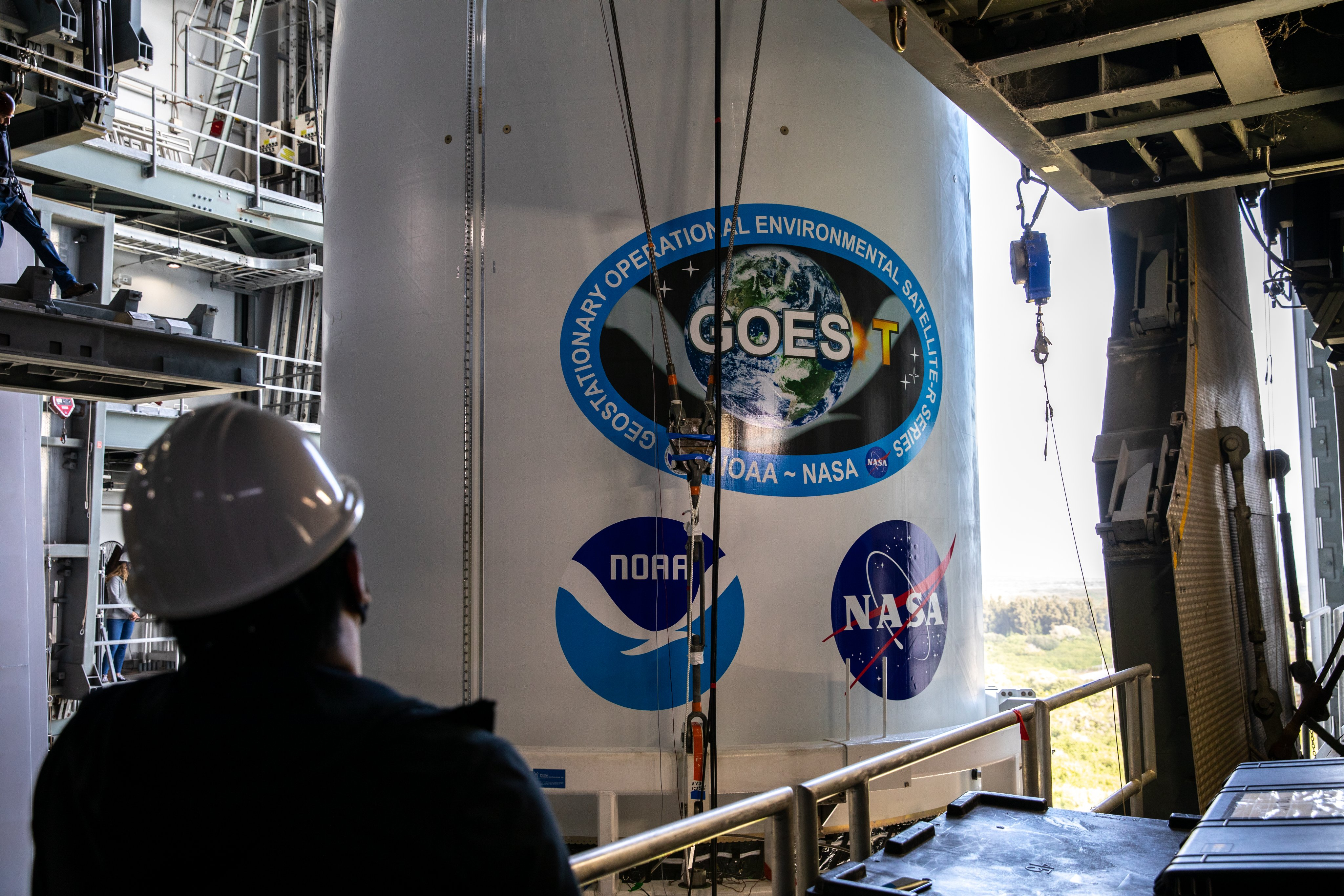Advanced new GOES-T weather satellite is 'go' for launch on March 1, NASA says
Once it's in space, it'll be known as GOES-18

Editor's note for March 1: NASA and NOAA will launch the new GOES-T satellite from Florida on March 1 using an Atlas V rocket. You can watch the launch live here, beginning at 4 p.m. EST (2100 GMT). Liftoff is at 4:38 p.m. EST (2138 GMT).
The next advanced weather satellite for the United States is officially ready to launch into orbit this week on an Atlas V rocket.
NASA and the National Oceanic and Atmospheric Administration (NOAA) cleared the new GOES-T weather satellite for a planned March 1 launch, the two agencies announced Saturday (Feb. 26). Liftoff is set for 4:38 p.m. EST (2138 GMT) from Space Launch Complex 41 at the Cape Canaveral Space Force Station in Florida, with the United Launch Alliance conducting the flight.
"The spacecraft, the Atlas V rocket and range equipment are all ready, and the combined government and contractor launch team is prepared to add GOES-T to the family and continue this amazing legacy of these weather sentinels," NASA launch director Tim Dunn said in a prelaunch press conference Saturday. GOES is short for Geostationary Operational Environmental Satellite in NASA parlance.
Video: How NOAA's GOES-T weather satellite will launch on Atlas V
Related: Advanced GOES-T weather satellite to launch with instrument fix
Built by Lockheed Martin, GOES-T (which will be renamed GOES-18 once in orbit) is the third of four advanced weather satellites designed to serve U.S. meteorological forecast needs through 2036. They are part of NOAA's $11.7 billion GOES-R satellite series program, which launched the GOES-16 weather satellite in 2016 followed by GOES-17 in 2018. A fourth satellite, GOES-U, will follow GOES-T to orbit in 2024.
"The GOES series has revolutionized severe event monitoring for us with regard to storms and other environmental hazards, such as wildfires, which are always a threat to our western states," said Steve Volz, NOAA's assistant administrator for satellite and information services, in the conference. The first GOES satellite, GOES 1, launched in 1975, with NASA and NOAA working together on the program.
Get the Space.com Newsletter
Breaking space news, the latest updates on rocket launches, skywatching events and more!
GOES-T will join its fellow GOES satellites in a geostationary orbit 22,300 miles (just over 35,800 kilometers) above Earth that will allow it to observe weather across the entire Western Hemisphere. The satellite's primary instrument is its Advanced Baseline Imager, a camera for tracking Earth's weather, oceans and environment. It can scan the Earth five times faster and with four times the resolution of its predecessors, NOAA officials wrote in an overview.

The new satellite also carries a first-of-its-kind Geostationary Lightning Mapper instrument to detect severe thunderstorms earlier "before they produce damaging winds, hail or even tornadoes," NOAA officials wrote.
GOES-T also carries four different instruments to monitor space weather. A solar ultraviolet imager will snap images of the sun while an U.V. and X-ray sensor will detect solar flares. A magnetometer and instrument suite to track energetic particles and changes in Earth's magnetic field from space weather events.
"A big part of the GOES-R [series] mission is actually doing solar observations," said Pam Sullivan, NOAA's GOES-R program director.
Before GOES-T can begin its weather-watching mission, it does have to reach space. To do that, it will need good weather.
Current forecasts predict a 60% chance of good weather at launch time on Tuesday, with conditions improving to 70% on Wednesday if NASA and NOAA have to delay for a day, said launch weather officer Jessica Williams of the 45th Weather Squadron at Space Launch Delta in the briefing.

If GOES-T is delayed until Thursday (March 3), the mission would come up against another launch by SpaceX to loft a batch of new Starlink internet satellites from Pad 39A of NASA's Kennedy Space Center near the GOES-T launch site. That mission is scheduled to launch at 9:32 a.m. EST (1432 GMT).
Dunn, NASA's launch director, said the SpaceX flight will take priority for the morning launch on March 3, but that ULA could still support an afternoon liftoff for GOES-T that same day if needed.
"It does look achievable if we get ourselves into that situation," Dunn said, adding that he hopes it won't be needed. "We're really focused on a Tuesday launch, March 1st, for GOES and everything looks really good for that opportunity right now."
Email Tariq Malik at tmalik@space.com or follow him @tariqjmalik. Follow us @Spacedotcom, Facebook and Instagram.
Join our Space Forums to keep talking space on the latest missions, night sky and more! And if you have a news tip, correction or comment, let us know at: community@space.com.

Tariq is the Editor-in-Chief of Space.com and joined the team in 2001, first as an intern and staff writer, and later as an editor. He covers human spaceflight, exploration and space science, as well as skywatching and entertainment. He became Space.com's Managing Editor in 2009 and Editor-in-Chief in 2019. Before joining Space.com, Tariq was a staff reporter for The Los Angeles Times covering education and city beats in La Habra, Fullerton and Huntington Beach. In October 2022, Tariq received the Harry Kolcum Award for excellence in space reporting from the National Space Club Florida Committee. He is also an Eagle Scout (yes, he has the Space Exploration merit badge) and went to Space Camp four times as a kid and a fifth time as an adult. He has journalism degrees from the University of Southern California and New York University. You can find Tariq at Space.com and as the co-host to the This Week In Space podcast with space historian Rod Pyle on the TWiT network. To see his latest project, you can follow Tariq on Twitter @tariqjmalik.









